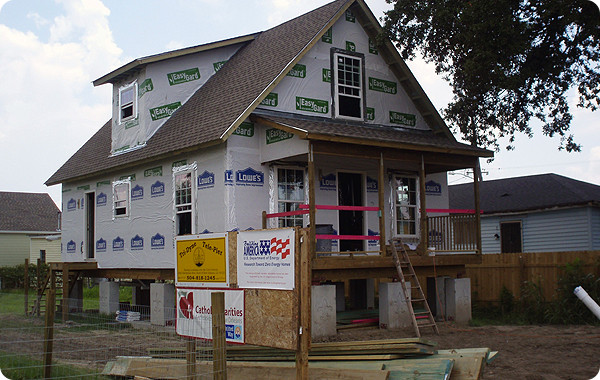Disaster Resiliency and Recovery Example Project: New Orleans, Louisiana

NREL helped the city of New Orleans rebuild efficiently after Hurricane Katrina.
In August 2005, Hurricane Katrina flooded 80% of New Orleans, Louisiana, causing $89.6 billion in damage. Three weeks later, the city was flooded again by Hurricane Rita. NREL, with funding from the U.S. Department of Energy (DOE), provided technical assistance to help the city incorporate energy efficiency and renewable energy into rebuilding homes and schools, and technical support and analysis on energy policy efforts.
DOE and NREL provided guidance, technical support, and expert input and analysis to the New Orleans City Council, Energy Policy Advisory Committee, and Mayor’s Office to develop and implement the Energy Smart New Orleans Plan, the city’s first comprehensive energy policy.
The plan focused on residential energy audits, energy efficiency incentives, low-income weatherization, commercial and industrial programs, photovoltaic and solar domestic hot water pilot projects, and education and outreach programs.
Sustainability in Homes
DOE and NREL partnered with two of the largest builders in the area—Green Coast Enterprises and Habitat for Humanity—to develop cost-neutral, energy-efficient design recommendations and encourage homebuilders to meet efficiency goals in the city's hot-humid climate and largely low-income neighborhoods. Featuring rooftop solar panels, extensive insulation, and efficient climate systems, the homes are designed to reduce energy use by up to 40% and lower utility bills by as much as $1,000 per year.
In addition, DOE, NREL, and the Building Science Corporation provided technical assistance to Green Coast Enterprises for Project Home Again to achieve DOE's Builders Challenge efficiency levels in more than 100 new homes. To assist the New Orleans Habitat for Humanity, DOE and NREL worked with the Florida Solar Energy Center to achieve ENERGY STAR® efficiency levels and improve moisture resistance and home sealing.
Building Energy Efficiency in Schools
NREL also completed energy audits and consulted on energy-efficient design strategies, energy modeling, and predesign and design reviews to help K-12 schools in New Orleans improve energy efficiency and reduce operational costs. NREL recommended 30% energy savings over code requirements, and four new schools were built to meet these recommendations, achieving a combined annual energy savings of more than $310,000.
Back to Resilient Energy Systems home page.
Share
